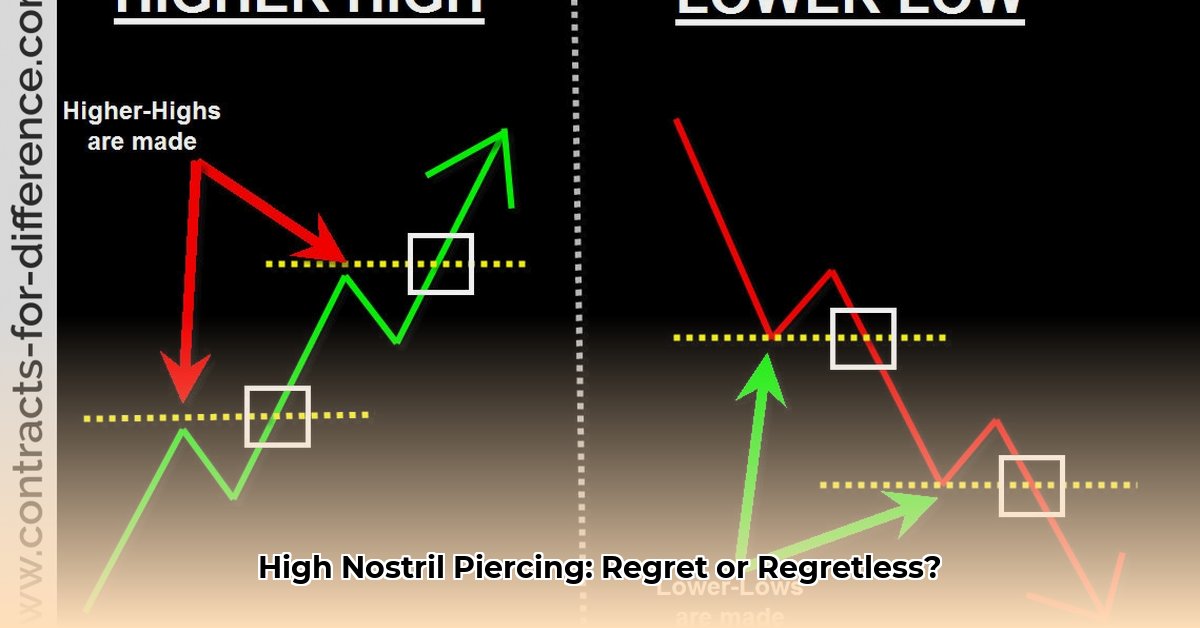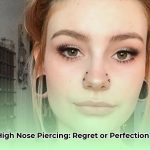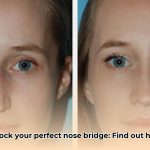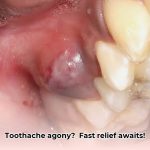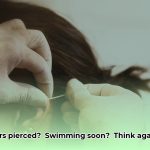Thinking about a high nostril piercing? This comprehensive guide provides everything you need to know, from the procedure itself to essential aftercare, ensuring a safe and healthy experience. A high nostril piercing may be more involved than a standard nostril piercing due to its location on thicker skin and a potentially longer healing period. We will cover selecting the right jewelry, identifying potential complications, and keeping your new piercing clean and infection-free. This guide arms you with the information and actionable steps you need to get a high nostril piercing and keep it looking its best.
High Nostril Nose Piercing: Safety, Risks & Detailed Aftercare
Considering a high nostril piercing? It’s a stylish and unique choice, but it’s also a commitment that requires careful thought and consistent care. Let’s dive into what you need to know, including safety considerations, potential risks, and detailed aftercare instructions, before you take the plunge. This includes assessing your nose’s anatomy, selecting the optimal piercing location, and understanding the key factors that promote successful healing.
Understanding the High Nostril Piercing: A Unique Placement
A high nostril piercing sits higher up on your nose, closer to the bridge, than a regular nostril piercing. This seemingly small difference makes a significant impact on the piercing process and the overall aesthetic. Because it often goes through thicker skin and, in some cases, cartilage, it tends to be a bit more painful and takes longer to heal than a standard nostril piercing. Think of it like the difference between poking a needle through your earlobe versus the stiffer cartilage higher up on your ear; the tissue density affects the experience. Due to this unique piercing location, proper aftercare is absolutely essential for preventing infection, minimizing the risk of complications, and avoiding unsightly nostril bumps.
Finding the Right Piercer: The Key to a Successful Piercing
Before you even think about jewelry, finding a reputable and experienced piercer is your number one priority. This isn’t a DIY project, and it’s not something to entrust to just anyone; you want someone with a proven track record and a portfolio of successful high nostril piercings. A good piercer understands the complexities of nasal anatomy, including the placement of nerves and blood vessels. They’ll carefully assess your nose’s structure and select the best spot for your piercing to minimize discomfort, optimize healing, and reduce the potential for future problems. Don’t just go with the cheapest option or the closest shop; prioritize quality, demonstrated skill, and a commitment to hygiene. Think of it as investing in a piece of art – your body – and ensuring it’s done right.
Expect some discomfort—it is a piercing, after all. But a skilled professional will use techniques to minimize the pain and make the process as comfortable as possible. They’ll also advise you on the best jewelry material for your initial piercing, taking into account your skin sensitivity and any allergies you may have. For initial piercings, implant-grade titanium, 14k or 18k gold (specifically formulated for piercings), or surgical-grade stainless steel are generally your safest bets. These materials are biocompatible, meaning they’re less likely to cause allergic reactions or irritation. Your piercer can guide you on the best option for your skin type and lifestyle. Remember, consulting with your piercer about suitable options for piercing jewelry, such as a labret stud or a carefully sized ring, can promote faster healing and allow you to avoid infection and rejection.
The Piercing Procedure: What Happens During the Process
The piercing procedure itself is usually relatively quick, but precision is key. Your piercer will thoroughly clean and sterilize the area around your nostril. Then, they’ll carefully mark the precise spot for the piercing, taking into account your nose’s anatomy and your desired aesthetic. Once you’ve confirmed the placement, they’ll use a sterile, single-use needle to create the piercing. With a swift, controlled movement, they’ll insert the needle and immediately place the initial jewelry. The entire process should be relatively short, but be prepared for a momentary pinch or stinging sensation. Many people describe it as a sharp, quick sting, similar to a bee sting. The pain level varies from person to person, and your individual pain tolerance will play a role. It’s important to remember that high nostril piercings may be perceived as more painful than standard nose piercings due to the increased density of tissue in the area.
High Nostril Piercing Healing: Essential Aftercare Tips
Healing a high nostril piercing takes patience and diligence – it typically takes 4 to 9 months for complete healing, and in some cases, even longer. Everyone heals at a different pace; don’t compare your progress to anyone else’s, as this can lead to unnecessary anxiety and frustration. Proper aftercare is absolutely essential during this phase; it’s not just a good idea, it’s a non-negotiable necessity. Neglecting aftercare can significantly increase your risk of infection, scarring, and other complications. Here’s your comprehensive action plan:
Daily Aftercare Routine:
- Gentle Cleaning: Twice a day, gently cleanse the piercing with a sterile saline solution (you can purchase pre-made saline solution at most pharmacies or make your own by dissolving ¼ teaspoon of non-iodized sea salt in 1 cup of warm distilled water). Use clean hands, and avoid harsh scrubbing or aggressive movements. Use a sterile gauze pad or cotton swab soaked in the saline solution to gently clean around the piercing site, removing any crust or debris. Imagine you’re washing a delicate flower, not a stubborn stain; be gentle and thorough.
- Hands Off!: Seriously, resist the overwhelming urge to touch, rotate, or fiddle with your piercing. Your hands carry all sorts of bacteria, even if they look clean to the naked eye. Every time you touch your piercing, you’re introducing new bacteria and increasing the risk of infection.
- Jewelry Care: Don’t twist, turn, or play with your jewelry. This can irritate the piercing channel, disrupt the healing process, and prolong the overall healing time. Leave it alone unless you’re actively cleaning it.
- Keep it Dry: When showering, bathing, or swimming, try to keep the piercing area as dry as possible. Avoid submerging your face in water, especially for the first few weeks. After showering, gently pat the area dry with a clean, disposable paper towel.
- Mindful Sleeping: Try to sleep on your back or on the side opposite your piercing, avoiding direct pressure on the piercing. Pressure can irritate the piercing and slow down the healing process. Consider using a travel pillow to position your head and prevent rolling onto your piercing during sleep.
- Avoid Irritants: Steer clear of harsh chemicals, fragrances, and cosmetics near the piercing site. These substances can irritate the piercing and increase the risk of allergic reactions. Be careful when applying makeup, sunscreen, or other facial products.
Potential Complications: What to Watch Out For
While complications are relatively unlikely with proper aftercare and a skilled piercer, they can occur. It’s important to be aware of potential problems, so you know what to watch out for and when to seek professional help.
| Risk Category | Likelihood | Severity | What to Look For | What to Do |
|---|---|---|---|---|
| Infection | Relatively Low | High | Increased pain that intensifies over time, excessive redness and swelling, throbbing sensation, yellow or green pus discharge, fever, chills, red streaks radiating from the piercing site, foul odor. | Contact your piercer or a medical doctor immediately; do not attempt to self-treat with over-the-counter remedies. Infection requires professional medical attention, which may include antibiotics. |
| Rejection | Moderate | Moderate | Piercing site becomes increasingly irritated and red, the skin around the piercing thins out, the jewelry appears to be pushing out of the skin, the piercing migrates or shifts position, the hole elongates, persistent itching or burning sensation. | See your piercer as soon as possible; they may recommend removing the jewelry to allow the piercing to close and heal. Attempting to force the piercing to stay in place will only exacerbate the problem and increase the risk of scarring. |
| Migration | Moderate | Moderate | Gradual movement of the piercing from its original placement, the piercing appears to be “drifting” or shifting position, the angle of the piercing changes, the skin around the piercing becomes tight or stretched. | See your piercer as soon as possible; they might recommend adjusting the jewelry to better accommodate the migration or removing the jewelry altogether to prevent further complications. |
| Scarring | Low | Low to Moderate | Formation of hypertrophic scars (raised, red scars) or keloids (large, overgrown scars), pitting or indentation around the piercing site, discoloration of the skin around the piercing. | Consult with a dermatologist or plastic surgeon; they can recommend various treatments to minimize scarring, such as silicone sheeting, steroid injections, or laser therapy. |
- Doctor Work Life Balance: Proven Strategies for Physician Well-being - November 20, 2025
- Find Your Work-Life Harmony: Quotes for a Fulfilling Life - November 18, 2025
- CRNA Work-Life Balance: Strategies for a Healthier Lifestyle - November 16, 2025
